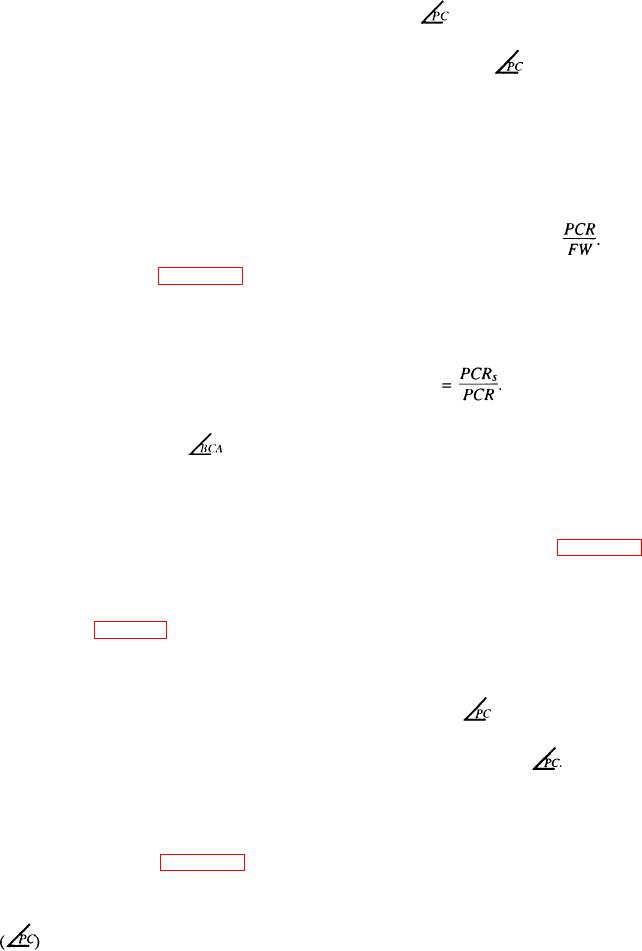
d. By using our knowledge of trigonometry,
7. Pitch diameter (PD)--This is the diameter of
the gear blank one addendum down at the large
we can obtain the PCR by using the cosec
end of the gear.
and one-half the pitch diameter.
of
8. Outside diameter (OD)
a. This is the maximum diameter of the gear.
0.5PD.
PCR = cosec
b. The gear blank is machined to this outside
13. Pitch cone radius small (PCRs). This is the
diameter.
difference between the pitch cone radius and the face
c. The outside diameter is obtained by adding
width. PCRs = PCR - FW.
the pitch diameter and twice the angular
addendum.
14. Face width ratio (FWR)
9. Angular addendum (ANG ADD)
a. This is the ratio of the pitch cone radius and
a. This is one-half the difference between the
the face width. FWR =
pitch diameter and the outside diameter.
b. In the triangle shown in figure 14-16, view
b. The small tooth dimensions are calculated
C, the hypotenuse is the addendum and the
from this ratio.
side adjacent to the angle (BCA) is known
15. Proportional tooth factor (PTF). This is the
as the angular addendum.
ratio between the pitch cone radius small and the pitch
C. To obtain the angular addendum (ANG
cone radius. FTF
ADD), simply multiply the addendum of
the gear by the cosine of angle BCA.
16. Small tooth dimensions. Multiply any large
ANG ADD = ADD COS
tooth dimension by the proportional tooth faction to
find the dimension of the small tooth of the gear or
10. Tooth dimensions (TD)
pinion.
a. All tooth dimensions at the large end are
17. Number of teeth for cutter selection (NTCS)
the same as a spur gear of the same DP.
a. In the triangle shown in figure 14-16, view
b. All tooth dimensions at the small end are a
E, the NTCS is the hypotenuse and the side
percentage of the large end, depending of
adjacent is the number of teeth of the gear.
the face width ratio.
b. The known angle in this case is the pitch
11. Face width (FW) (fig. 14-15)
cone angle, or the back cone angle.
a. This is the length of the tooth.
c. To obtain the NTCS, simply multiply the
b. The gear blank is machined to this dimen-
sion.
by the NT.
secant of
12. Pitch cone radius (PCR)
NTCS = NT Sec
a. This is the length of the side of a cone
formed by the bevel gear.
d. The NTCS is taken from the number of
b. This radius is used extensively in cal-
teeth on an imaginary spur gear that has a
culations.
different pitch diameter (PD) than the pitch
c. In the triangle shown in figure 14-16, view
diameter (PD) of a bevel gear.
D, the hypotenuse is the pitch cone radius
e. When your computation for the NTCS
and the side opposite the pitch cone angle
contains a decimal number, round the
is equal to one-half the pitch
computation to the next higher whole
number.
diameter (0.5 PD).
14-18

